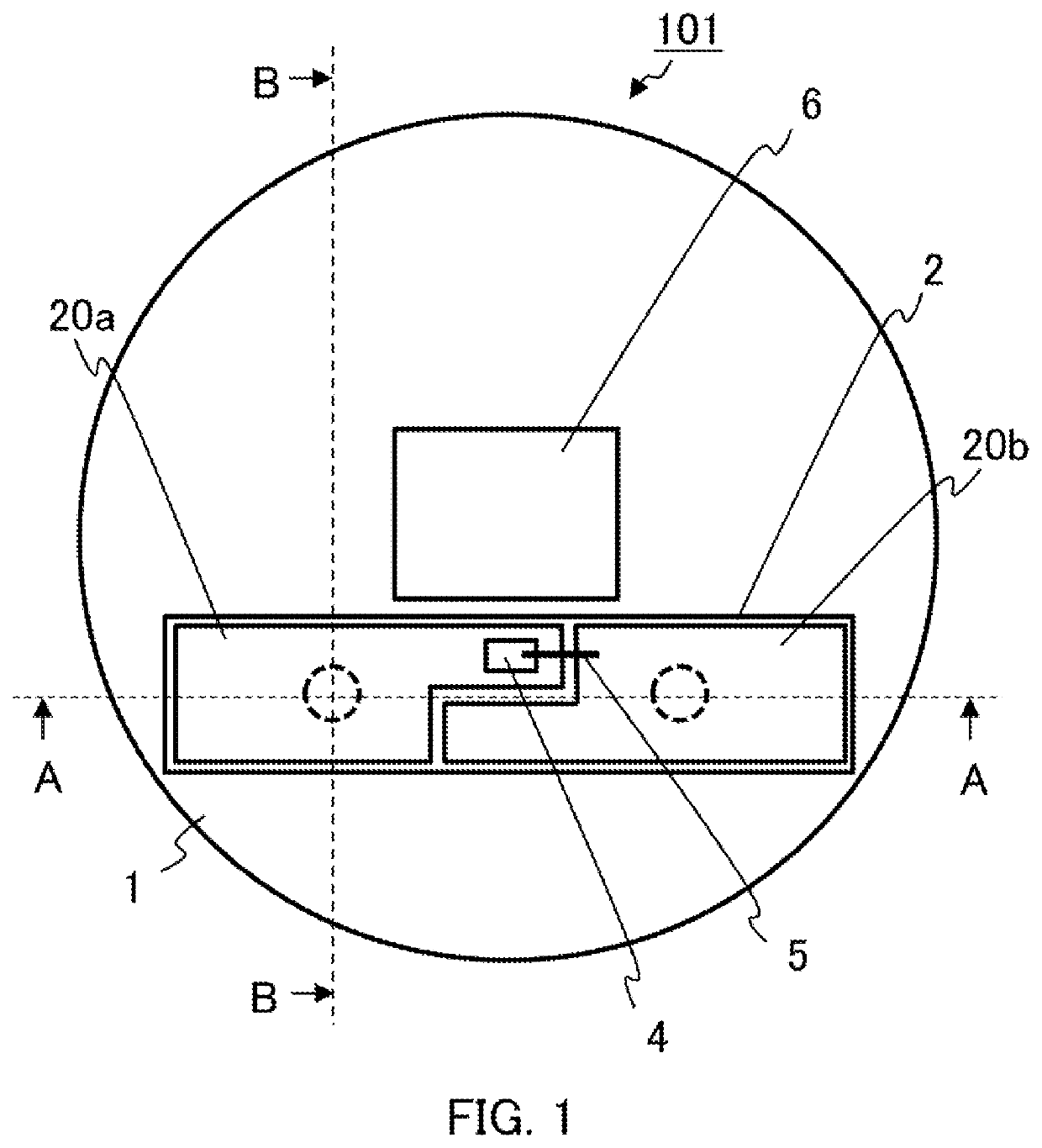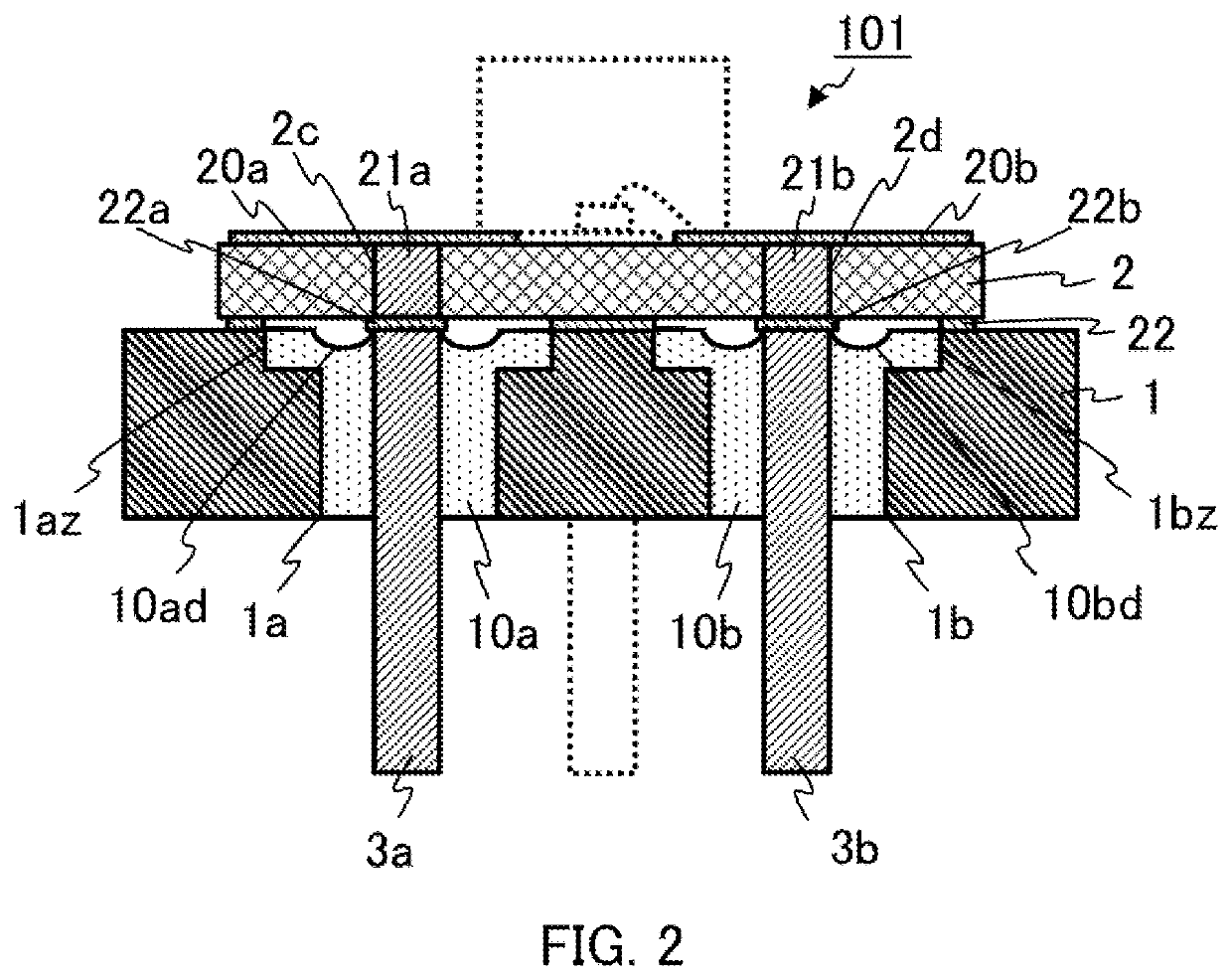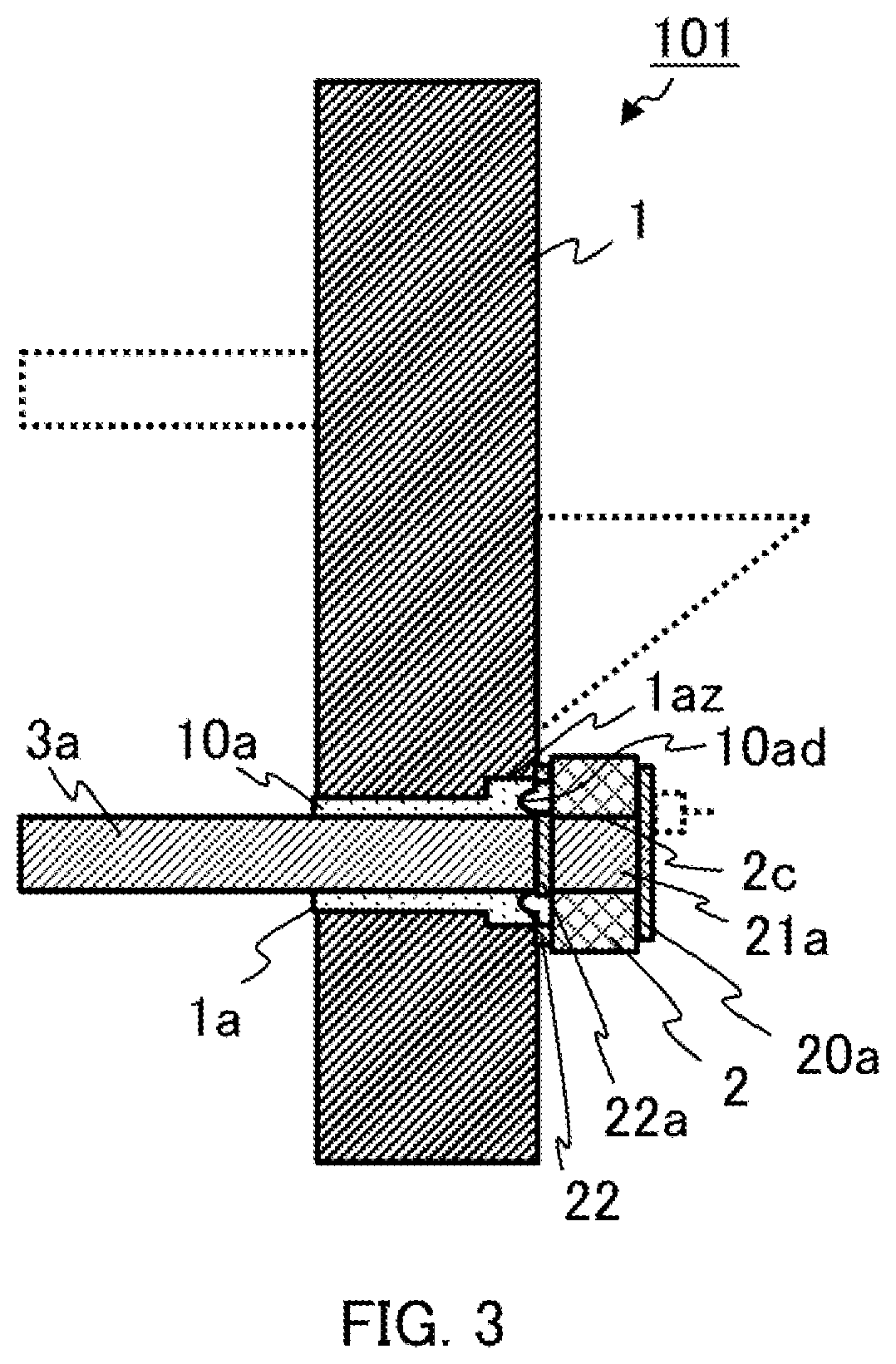Semiconductor laser device
a laser device and semiconductor technology, applied in the direction of semiconductor lasers, lasers, solid-state devices, etc., can solve the problems of large deterioration of light waveform, and difficulty in demodulating signals, so as to reduce parasitic inductance, reduce the use of wires, and improve the effect of light waveform modulation
- Summary
- Abstract
- Description
- Claims
- Application Information
AI Technical Summary
Benefits of technology
Problems solved by technology
Method used
Image
Examples
embodiment 1
[0022]FIG. 1 is a plan view showing a configuration of a semiconductor laser device 101 according to Embodiment 1 of the present application. FIG. 2 is a sectional view taken in the direction of the arrows along the line A-A of FIG. 1, and FIG. 3 is a sectional view taken in the direction of the arrows along the line B-B of FIG. 1. With reference to FIG. 1 to FIG. 3, the semiconductor laser device 101 comprises a stem 1 serving as a base; an LD submount 2 mounted on the surface of the stem 1; leads 3a, 3b fixed in the through holes 1a, 1b formed in the stem 1 and electrically connected to surface electrodes 20a, 20b on the LD submount 2 via conductive embedded layers 21a, 21b in via holes 2c, 2d and back electrodes 22a, 22b, respectively; an LD chip 4, which is a semiconductor laser element, joined to the surface of the surface electrode 20a on the LD submount 2; a gold wire 5 connecting the top surface electrode of the LD chip 4 to the surface electrode 20b; and a mirror 6 for refl...
embodiment 2
[0033]While Embodiment 1 described the case of connecting the surface electrodes 20a, 20b to the leads 3a, 3b via the embedded layers 21a, 21b in the via holes 2c, 2d, Embodiment 2 describes a case of connecting the surface electrodes 20a, 20b with the leads 3a, 3b by direct contact.
[0034]FIG. 5 is a plan view showing a configuration of a semiconductor laser device 102 according to Embodiment 2 of the present application. FIG. 6 is a sectional view taken in the direction of arrows along the line A-A of FIG. 5. As shown in FIGS. 5 and 6, the semiconductor laser device 102 has leads 3a, 3b that protrude from the surface of the stem 1 into direct contact with surface electrodes 70a, 70b on an LD submount 7 that is formed by cutting two corners of the LD submount 2 used in Embodiment 1, to be electrically connected with the surface electrodes 70a, 70b by soldering without via the embedded layers in the via holes, respectively. The top ends of the leads 70a, 70b may be expanded or constr...
embodiment 3
[0038]Embodiment 3 describes a case of mounting a PD chip for monitoring the output of the laser light emitted from the LD chip 4.
[0039]FIG. 9 is a plan view showing a configuration of a semiconductor laser device 103 according to Embodiment 3 of the present application. FIG. 10 is a sectional view taken in the direction of arrows along the line B-B of FIG. 9.
[0040]In general semiconductor laser devices, an LD chip is mounted so as to emit its laser light in the direction perpendicular to the stem without using a mirror, and a PD chip is implemented perpendicularly to the LD chip (parallel to the stem) to receive a light leaking from the rear side of the LD chip in order to monitor the output of the laser light. However, it is difficult to ensure a space for mounting the PD chip perpendicularly to and behind the LD chip 4 in the configuration of Embodiment 1.
[0041]Hence, as shown in FIGS. 9 and 10, the semiconductor laser device 103 has a PD chip 9, which is a photodiode element, an...
PUM
 Login to View More
Login to View More Abstract
Description
Claims
Application Information
 Login to View More
Login to View More - R&D
- Intellectual Property
- Life Sciences
- Materials
- Tech Scout
- Unparalleled Data Quality
- Higher Quality Content
- 60% Fewer Hallucinations
Browse by: Latest US Patents, China's latest patents, Technical Efficacy Thesaurus, Application Domain, Technology Topic, Popular Technical Reports.
© 2025 PatSnap. All rights reserved.Legal|Privacy policy|Modern Slavery Act Transparency Statement|Sitemap|About US| Contact US: help@patsnap.com



